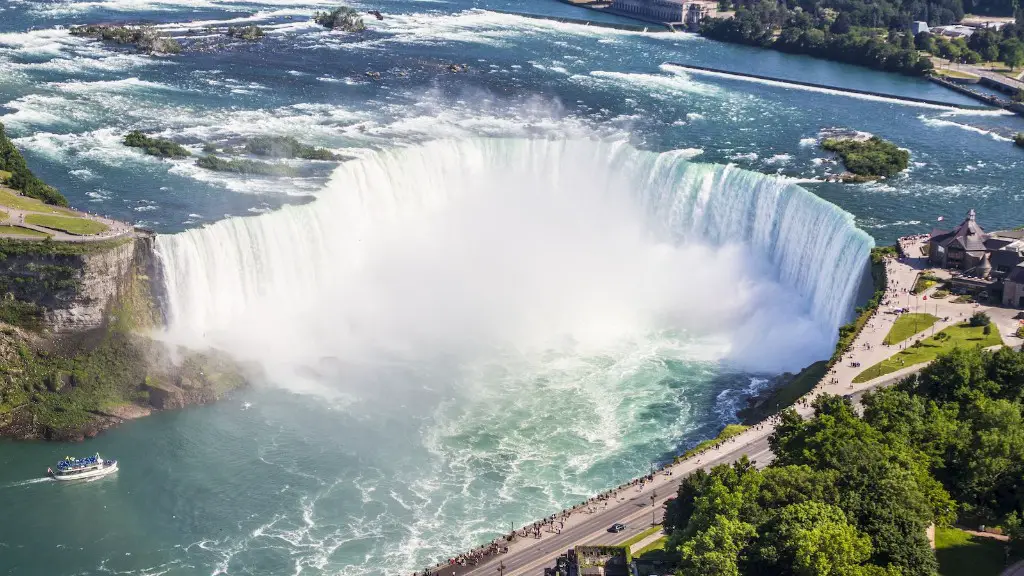Rivers are essential water resources, providing habitats for aquatic life, offering recreational opportunities to communities, and supporting a variety of industries. The St. Croix River and Mississippi River are two large rivers in the United States that are both key sources of water for human and ecological needs. While the St. Croix River is relatively unpolluted, the Mississippi River is heavily polluted.
Pollution in the Mississippi River comes from many sources, both natural and human-derived. Industrial wastewater, agricultural runoff, urban stormwater, and landfill leachates are all contributors of contaminants to the Mississippi River. Additionally, certain naturally occurring contaminants, such as heavy metals from geologic erosion, also add to the overall river pollution.
The Mississippi River is one of the longest rivers in the world, and pollution levels vary across the entire length of the river. The most polluted section of the Mississippi River is considered to be the lower 445 miles due to the high concentration of industrial pollutants. This lower stretch of the Mississippi is especially susceptible to contamination because all of the wastewater from the upstream sources is collected and funneled into this section of the river.
In comparison, the St. Croix River is much cleaner than the Mississippi River, and experiences significantly lower pollution levels than the Mississippi. While industrial, agricultural, and urban sources both contribute to some level of contamination of the St. Croix, overall, the water quality is much better than in the Mississippi.
The difference in the water quality between the two rivers can be attributed to a variety of factors. One of the major differences is the size of the two rivers. The Mississippi is much longer and larger than the St. Croix, meaning that it receives much more wastewater from upstream locations. Additionally, the Mississippi is located in a much larger and more heavily populated area than the St. Croix, increasing the number of potential sources of pollutants. The St. Croix, on the other hand, is located in a more rural region, and its size makes it more manageable for pollution control efforts.
Overall, it is clear that the Mississippi River is much more polluted than the St. Croix River. It is essential that both rivers are protected, as they are important resources to the areas they flow through. Governments and communities must continue to work together to ensure that water pollution is limited and that both rivers remain healthy.
Impact on Wildlife
Not only do the two rivers have different levels of pollution, the health of wildlife populations in the rivers is also different. The Mississippi River has suffered years of pollution, and its wildlife population is in decline. Fish and other aquatic species have been impacted by the increase in contaminants, and their numbers are decreasing due to exposure.
On the other hand, the St. Croix River is home to a robust wildlife population. The river is home to over 60 species of fish, and its wildlife populations have declined only slightly due to pollution. The pollution levels in the St. Croix are low enough to support healthy levels of aquatic wildlife, while the pollution levels in the Mississippi are too high to maintain a healthy wildlife population.
The impacts of the differences in pollution between the two rivers extend beyond just the aquatic species living in them. Birds and other wildlife can be affected by the presence of pollutants, and the lower population of fish in the Mississippi can harm the birds that depend on them for food.
Environmental Regulations
The federal Environmental Protection Agency (EPA) implements regulations to protect water sources from contamination. In the United States, the EPA has enacted regulations limiting the level of pollutants that can be present in rivers and other water sources.
The EPA has implemented different regulations for the St. Croix River and the Mississippi River, reflecting their different levels of pollution. The regulations for the St. Croix River are more lax, as the river has lower overall pollution levels and is less likely to suffer from contamination. Meanwhile, the regulations for the Mississippi River are much stricter, as the river is more heavily polluted and more likely to suffer from additional sources of contamination.
These regulations are key to ensuring that water sources remain healthy and that pollutants are limited. By ensuring that both rivers are adequately regulated, the EPA is taking steps to protect them and limit potential damage from pollution.
Mitigating Pollution
In order to reduce the levels of pollution in the Mississippi River, both governments and citizens must take action. Governments can implement stricter pollution regulations and stricter enforcement of existing regulations. Additionally, governments can fund efforts to clean up existing pollution and reduce the amount of wastewater entering the Mississippi from upstream sources.
Individuals can also do their part to reduce the pollution levels in the Mississippi. Some steps that individuals can take include reducing water usage, limiting their use of fertilizers and chemicals, and disposing of waste properly. Additionally, individuals can support government efforts to reduce pollution, such as supporting stronger regulations and funding of clean-up efforts.
These efforts can have a positive impact on the health of the Mississippi River and its wildlife population. By reducing the levels of pollutants in the river, the ecosystem can be protected and preserved for future generations.
Adapting to Increasing Pollution
While efforts to reduce pollution in the Mississippi River are important, it is also necessary to prepare for the possibility of increasing pollution levels in the future. The effects of climate change and increased human development could lead to higher levels of pollutants entering the river.
In order to prepare for this possibility, governments and communities must develop contingency plans to protect the river from further contamination. These plans may include monitoring of pollution levels, additional regulations, and investments in wastewater treatment technologies. Additionally, efforts should be made to protect areas near the river in order to reduce the amount of polluted runoff entering the river.
Adapting to increasing pollution in the Mississippi River is essential if the river is to remain healthy in the future. By taking steps to protect the river now, future generations will be able to enjoy its benefits and continue to rely on it as a source of water.
Conclusion
The Mississippi River is much more polluted than the St. Croix River due to its larger size, location in a heavily populated area, and higher levels of industrial pollutants. The difference in water quality between the two rivers impacts both the wildlife and the human communities that rely on them. It is essential that both governments and individuals work together to reduce pollution levels in the Mississippi and protect the river from further contamination. By doing so, the river can remain healthy and provide clean water to future generations.




